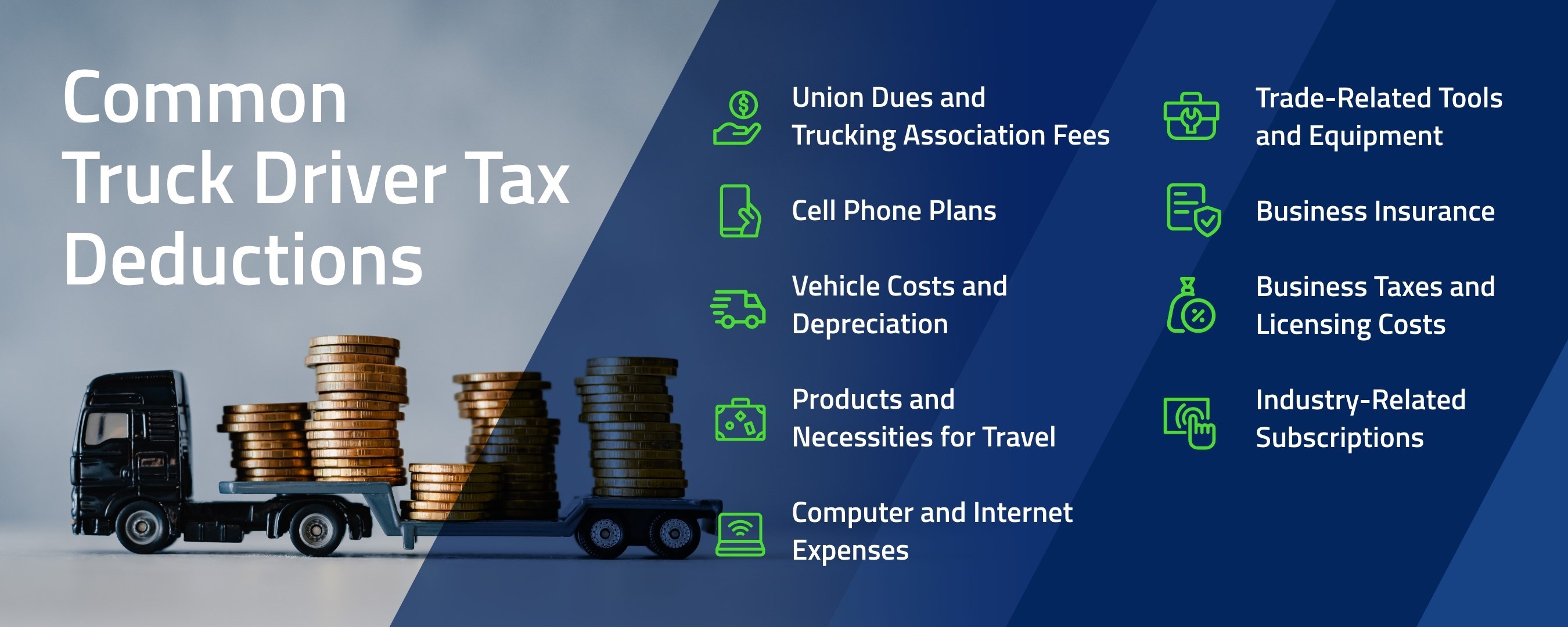 With more freight hauling work than many could handle in 2021, truck drivers enjoyed significant salary improvements. Uncle Sam expects to benefit from extended hours of service money, bonuses, and companies increasing pay rates to keep qualified CDL professionals in their ranks. Although paying taxes is an unwelcome responsibility every American shares, truckers have a reason for optimism.
With more freight hauling work than many could handle in 2021, truck drivers enjoyed significant salary improvements. Uncle Sam expects to benefit from extended hours of service money, bonuses, and companies increasing pay rates to keep qualified CDL professionals in their ranks. Although paying taxes is an unwelcome responsibility every American shares, truckers have a reason for optimism.
Changes to the tax system could result in men and women who deliver upwards of 72 percent of all goods and materials keeping a larger portion of their earnings.
If you worked a truck driving job in 2021 or plan to earn your CDL and take a good-paying position in 2022, the following information could prove useful.
What Are Truck Driver Tax Brackets?
Reported backlogs at the Internal Revenue Service (IRS) and pandemic-related disruptions prompted the federal government to move Tax Day to May 17 last year. The due date for federal taxes has been kicked down the road, slightly, from the traditional April 15 deadline to April 18, 2022. Truckers can apply for an extension and put off writing a check until October 2022. If you have a refund coming, the IRS will reportedly begin accepting 2021 filings as soon as January 24.
Truck driver tax brackets depend largely on taxable income and filing statuses, including single, married filing jointly or qualifying widow(er), married filing separately, or head of household. Professional drivers can anticipate paying more to the IRS if they were fortunate enough to cash in on rising trucker salaries. There are seven brackets for 2021 earnings: 10 percent, 12 percent, 22 percent, 24 percent, 32 percent, 35 percent, and 37 percent. According to the IRS, items that rank among the greatest interest include the following:
- For tax year 2021, the monthly limitation for the qualified transportation fringe benefit remains $270, as is the monthly limitation for qualified parking.
- The standard deduction for married couples filing jointly for tax year 2021 rises to $25,100, up $300 from the prior year. For single taxpayers and married individuals filing separately, the standard deduction rises to $12,550 for 2021, up $150, and for heads of households, the standard deduction will be $18,800 for tax year 2021, up $150.
- The tax year 2021 maximum Earned Income Credit amount is $6,728 for qualifying taxpayers who have three or more qualifying children, up from a total of $6,660 for tax year 2020.
Marginal Rates for the tax year 2021, the top tax rate remains 37 percent for individual single taxpayers with incomes greater than $523,600 ($628,300 for married couples filing jointly). The other rates include the following.
- 35 percent for incomes over $209,425 ($418,850 for married couples filing jointly).
- 32 percent for incomes over $164,925 ($329,850 for married couples filing jointly).
- 24 percent for incomes over $86,375 ($172,750 for married couples filing jointly).
- 22 percent for incomes over $40,525 ($81,050 for married couples filing jointly).
- 12 percent for incomes over $9,950 ($19,900 for married couples filing jointly).
- 10 percent for incomes of $9,950 or less ($19,900 for married couples filing jointly).
The standard tax deduction stands at $12,550 for single people or married couples filing separately, $18,800 for head of household, and $25,100 for married couples filing jointly or surviving spouses. Approximately 90 percent of taxpayers use the standard deduction that increased significantly following the Tax Cuts and Jobs Act of 2017. Truckers who have accumulated work-related expenses greater than their respective standard deduction may be better served by itemizing, according to tax experts.

Common Truck Driver Tax Deductions
If you received a W-2 from a freight hauling company, the IRS will not allow you to deduct job-related expenses. However, self-employed truckers or those operating under a lease purchase arrangement will be pleased to discover many of the usual deductions remain in place. These include the following.
- Union Dues and Trucking Association Fees
- Cell Phone Plans
- Vehicle Costs and Depreciation
- Products and Necessities for Travel
- Computer and Internet Expenses
- Trade-Related Tools and Equipment
- Business Insurance
- Business Taxes and Licensing Costs
- Industry-Related Subscriptions
It’s vital to distinguish tax-deductible expenses from purely personal ones. While items essential to your truck driving job, such as uniforms, gloves, and even sunglasses may be tax-deductible, everyday wear is typically not allowable. Commuting to and from home or a business facility is considered a personal expense, while transporting a load is job-related. Truckers are advised to maintain concise records of their expenditures and consult with a tax professional regarding gray areas.
Health Care Deductions May Lower Trucker Taxes
Owner-operators are usually tasked with maintaining a health insurance policy at their own expense. The IRS appears to be easing out-of-pocket expenses by allowing deductions. Depending on how much independent truckers spend and the way they organize their business, the following could lower your tax liability, according to the IRS.
- For the taxable years beginning in 2021, the dollar limitation for employee salary reductions for contributions to health flexible spending arrangements remains $2,750.
- For tax year 2021, participants who have self-only coverage in a Medical Savings Account, the plan must have an annual deductible that is not less than $2,400, up $50 from tax year 2020; but not more than $3,600, an increase of $50 from tax year 2020.
- For self-only coverage, the maximum out-of-pocket expense amount is $4,800, up $50 from 2020.
- For tax year 2021, participants with family coverage, the floor for the annual deductible is $4,800, up from $4,750 in 2020; however, the deductible cannot be more than $7,150, up $50 from the limit for tax year 2020.
- For family coverage, the out-of-pocket expense limit is $8,750 for tax year 2021, an increase of $100 from tax year 2020.
Health care plan costs continue to rise, and leveraging tax breaks can help independent truckers follow through with annual physicals and get the medication attention they deserve.
Miscellaneous Tax Breaks Truck drivers Can Utilize
Although CDL professionals spend long days on the road and weeks away from home, downtime and the internet can open some unique opportunities. Truckers wishing to further their education can enroll in online classes and deduct a portion of the cost. The Lifetime Learning Credit stands at $119,000, an increase of $1,000 over 2020 tax filings. American citizens who now reside and pull loads in Canada or Mexico may be able to take advantage of the $108,700 foreign earned income exclusion. And the annual exclusion for gifts remains $15,000 again this year.
There has never been a better time to earn a CDL and take a good-paying position as a truck driver. In turn, this tax information should prove helpful to keep more of your income in your bank accounts.
CDLjobs.com does not provide tax, legal or accounting advice. This material has been prepared for informational purposes only, and is not intended to provide, and should not be relied on for, tax, legal or accounting advice. You should consult your own tax, legal and accounting advisors before engaging in any transaction.



